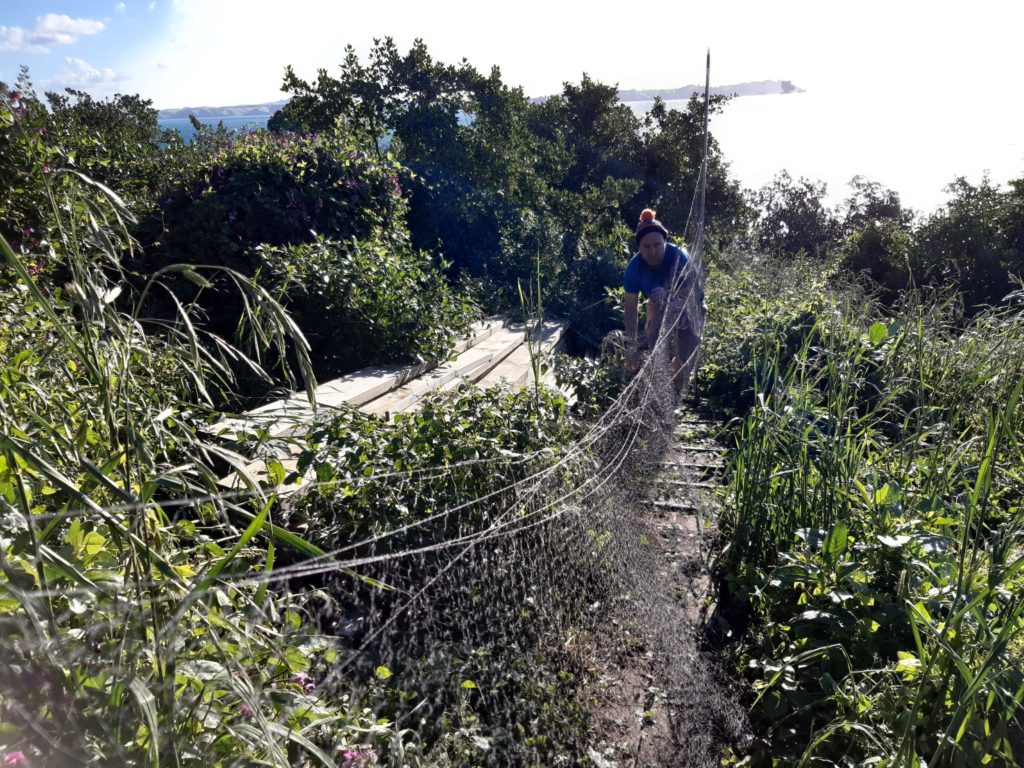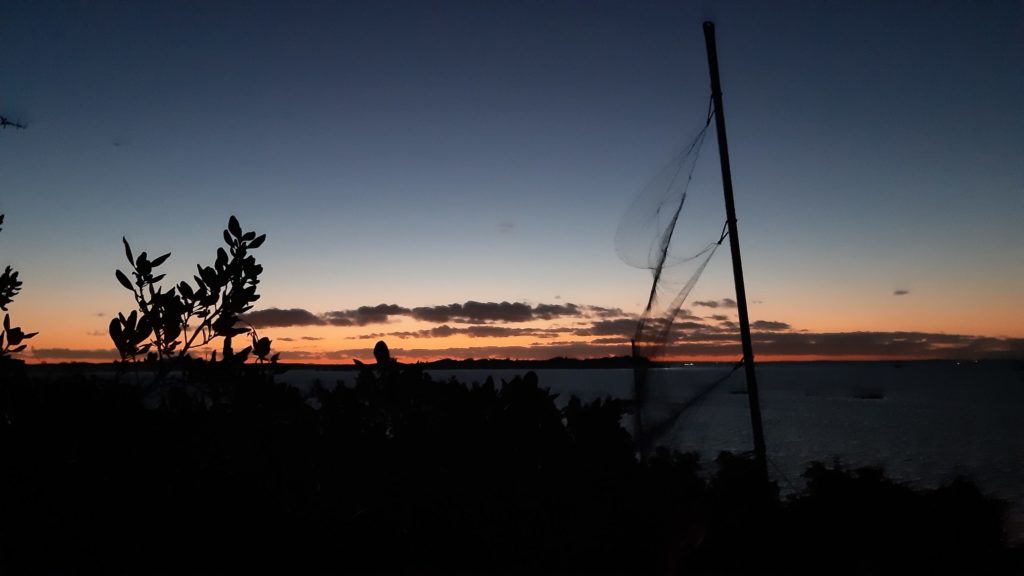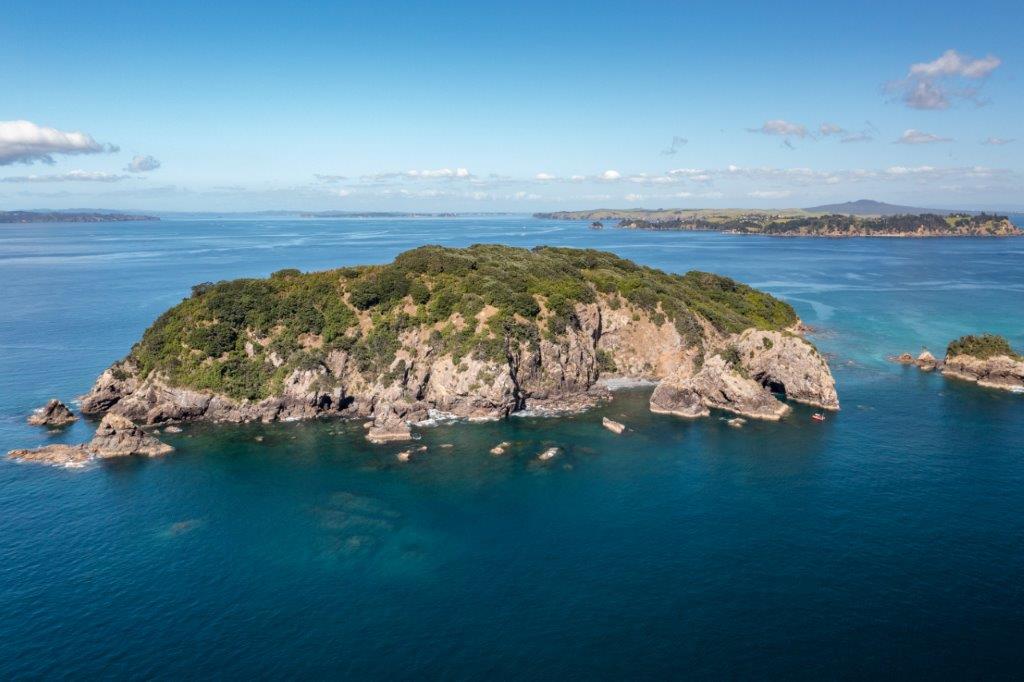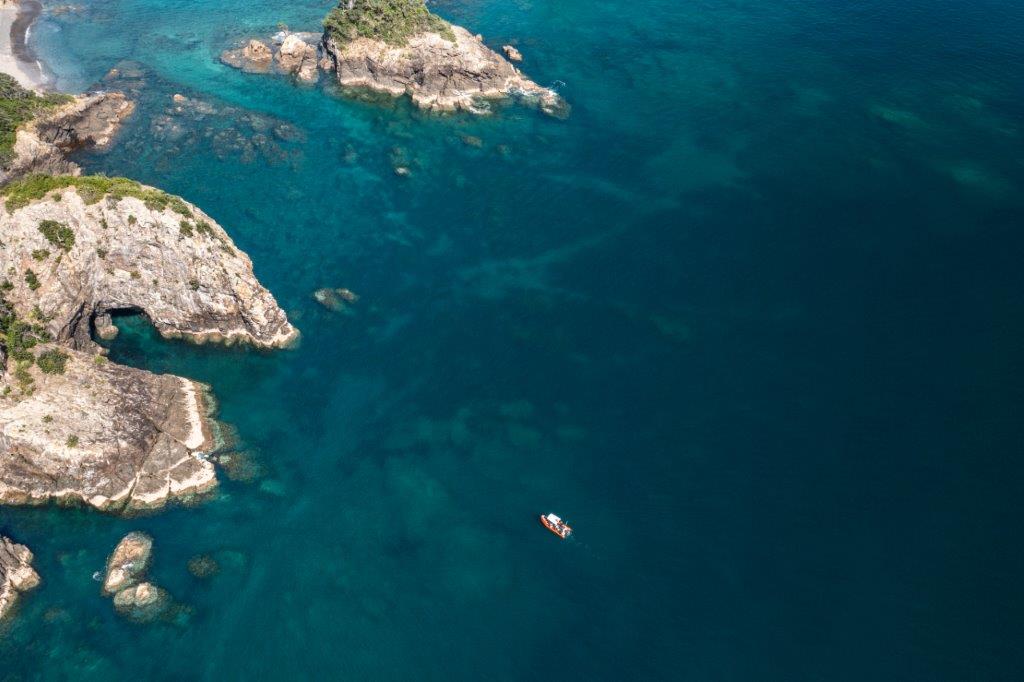The Noises hold a very special interest for seabird lovers. Being home to at least…
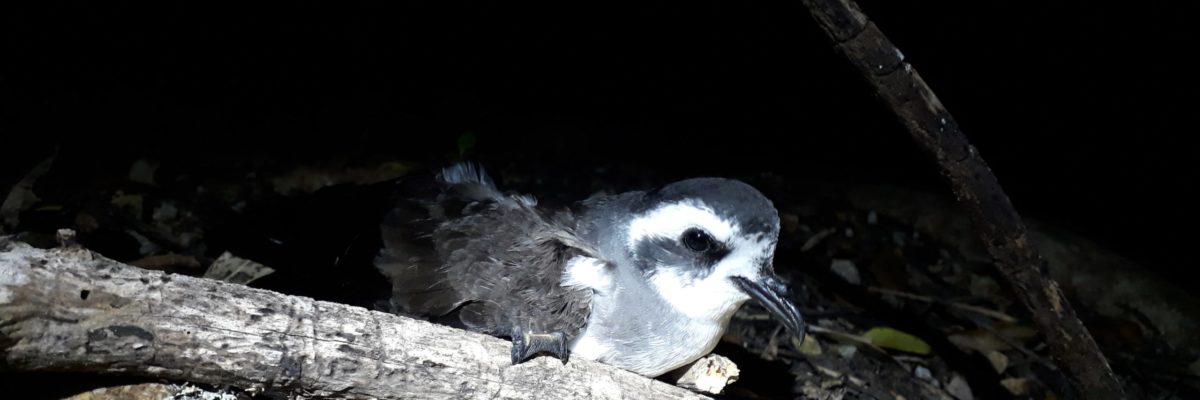
Return of the tiny, winged taonga
As has been reported in several posts already, in 2019 Auckland Council included The Noises Islands in the regional seabird monitoring and research programme, pledging to a significant 13-years (and counting) commitment. But there are so many seabird species in the Auckland region, scientists can’t study all of them, so they looked for gaps in their knowledge to prioritise which species to study. From that analysis, it was decided that the white-faced storm petrel definitely needed attention, specifically on Maria/Ruapuke Island.
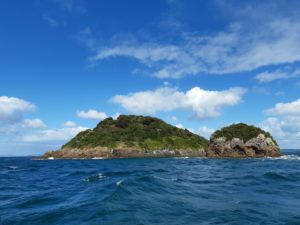
Following two smaller surveys last year, the first 2021 survey was scheduled for late September, to coincide with the birds returning to the nest, but Covid reared its head and the country was plunged into another Level 4 lockdown, and the survey was called off. Obviously, this was disappointing, because bird surveys are entirely dependent on breeding and nesting schedules but happily, levels were lowered, and restrictions marginally eased, and permission was granted for two scientists to head to Ruapuke.
The re-scheduled expedition took place in mid-October with a pared-down team of two. Auckland Council’s Seabird Scientist Dr Gaia Dell’Ariccia was joined by Auckland Museum’s Curator of Land Vertebrates, Dr Matt Rayner, who is collaborating in all elements of this project. Deposited on Ruapuke/Maria Island with all their field equipment, the pair also needed enough provisions to sustain them through two nights of intense work. Their luggage included 10 litres of water, pre-made soups, cheese, bread, fruit, and most important of all, chocolate.
Unlike the recent grey-faced petrel survey on Ōtata, where it was possible to check and band birds by extracting them from their burrows, white-faced storm petrels require a different approach because they are more sensitive to stress than their grey-faced cousins. Taking them out of their burrows would lead to a high risk of them abandoning their nests and eggs, so the researchers used a different method.
“The method Matt and I chose for studying these birds is called capture-mark-recapture. Birds are captured, marked (i.e. banded), and released. The number of birds recaptured during following capture sessions allows us to calculate an estimate for the population size. For the first two capture surveys last year, we only used a spotlight and, on the first trip Matt and I caught more than 100 birds and on the second, with Rod, Sue, and Zoe, we weren’t as lucky and only managed to capture 20 or 30 birds.”
This year to increase capture rates, the researchers used mist nets – long walls of net 3m high and 6m long with the mesh held between poles, not unlike a volleyball net. “Every night, as soon as darkness fell, around 8:30pm, the birds return to land and that’s when we’d open the net,” Gaia explained.
The mist net is an incredibly efficient method for capturing birds and in two nights, working from 8:30pm till around 2:15am, the busy scientists caught and banded a total of 365 birds. “At certain times we were getting so many, we became overwhelmed and had to temporarily close the nets until we processed the birds we’d already caught. Then we’d catch up and re-open it”.
Once caught, the birds were gently placed inside individual soft cotton breathable bags which makes them calm and quiet, which allowed Gaia and Matt to band and assess the birds. If the scientists felt an egg in the belly, those birds were released immediately at the nets. Birds were also checked for ‘brood patches’ the area on a bird’s belly that becomes bare when they’re incubating an egg. This patch of lost feathers is common to all birds, and allows them to keep the egg warm by having it in direct contact with their skin. By looking at the bellies of birds, researchers can determine if they are nesting, and then estimate how many birds are breeding. With incubation taking about 50 or 60 days, eggs that are laid now will fledge sometime between mid-February and mid-March.
“We were very excited when, this year, we extracted from the nets four birds that were already banded from our survey last year. Using the same mist-net capture method next year, we will be able to calculate the first population estimate. As we continue year after year, the more birds we band, the more precise and reliable our data will be.”
While statistics cannot yet be applied until more surveys are completed, and always using the same method, first impressions suggest that Ruapuke may be home to thousands of birds, and the very conditional estimate is somewhere between five and ten thousand. “But we have no idea how many breeding pairs there are, and we don’t know anything about population trends. Are they stable, increasing, decreasing? We really have no idea what is going on there,” says Gaia.
Uninhabited by humans, Ruapuke is chock-a-block with burrows. “When burrow occupancy was checked two years ago, it was quite low, and birds incubating eggs were found in only 24% of burrows. Gaia and Matt checked burrows with the “burrow-scope” – the endoscope camera that allows them to spy inside burrows without disturbing potential occupants, and all the burrows they checked were still empty.”

This is not worrying at this stage, and birds are most likely laying now – “the estimate for peak laying was a few days after we left – and a lot of burrows had fresh linings, ready for eggs to be laid. To more accurately determine this season’s burrow occupancy, hopefully, we’ll return sometime in November.”
During the day, aside from checking burrows, Gaia and Matt also cleared some of the voracious mile-a-minute weed, Dipogon lignosus, the fabaceous sweet-pea-like vine that proliferates year-round in the mild, fertiliser rich conditions. It’s constantly trying to strangle native vegetation and now there is growing interest in preventing that from happening.
In some places this weed had completely swallowed up the boardwalk that was put in place just six months ago. The busy researchers also spotted a pod of common bottlenose dolphins sweeping one of Ruapuke’s rocky coves for a meal. “The pod included a mother with a baby, and a very old individual who was whistling. They hung around for hours.”
In spite of being exhausted when they returned to the mainland, Gaia and Matt were grateful to have gone at all. This survey will help provide a deeper understanding of the overall health of white-faced storm petrels because, while they might be small, they play a vital role in the wider ecosystem.

